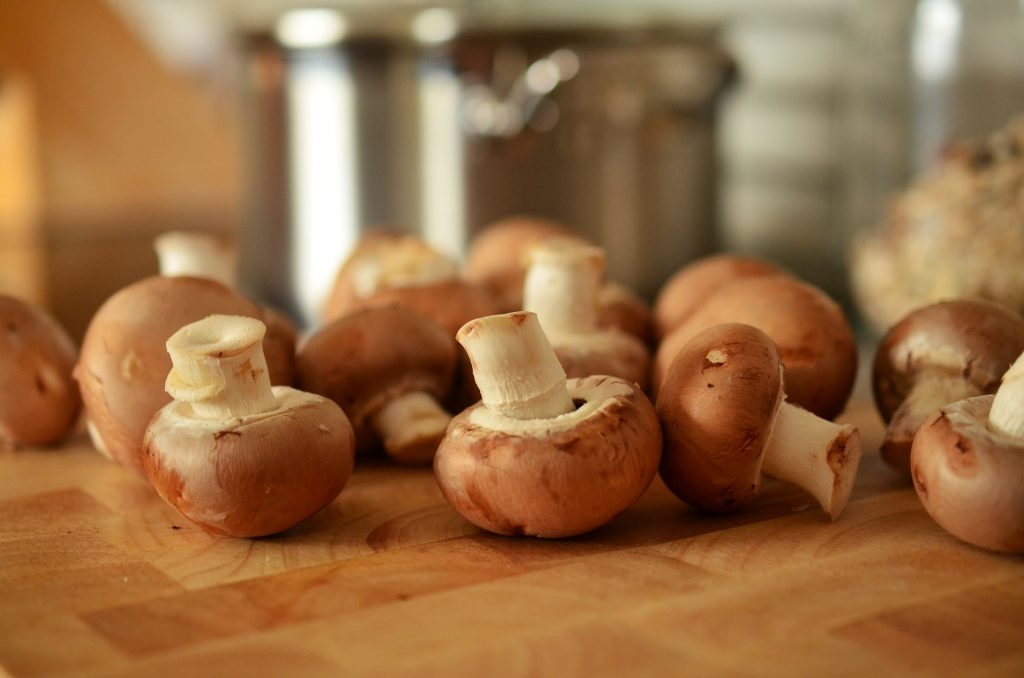 The vitamin D content of cultivated mushrooms is very low (<0.1 μg/100 g fresh weight). However, mushrooms contain high amounts of ergosterol, a precursor to vitamin D. This is interesting because under conditions of ultraviolet exposure, mushrooms can synthesise vitamin D from ergosterol, in a reaction similar to the synthesis of vitamin D from cholesterol in humans. Mushrooms that have been exposed to ultraviolet light therefore have significantly higher levels of vitamin D compared to those that have not been exposed. Artificially exposing mushrooms, even after they have been picked can increase vitamin D concentrations to nutritionally relevant levels. Mushrooms can therefore be a useful source of vitamin D but the amount of vitamin D produced is dependent on the ultraviolet spectrum, the moisture content of the mushrooms, the type of mushroom, the amount of radiation and the temperature. A number of studies have investigated the usefulness of mushrooms as nutritionally relevant source of vitamin D.
The vitamin D content of cultivated mushrooms is very low (<0.1 μg/100 g fresh weight). However, mushrooms contain high amounts of ergosterol, a precursor to vitamin D. This is interesting because under conditions of ultraviolet exposure, mushrooms can synthesise vitamin D from ergosterol, in a reaction similar to the synthesis of vitamin D from cholesterol in humans. Mushrooms that have been exposed to ultraviolet light therefore have significantly higher levels of vitamin D compared to those that have not been exposed. Artificially exposing mushrooms, even after they have been picked can increase vitamin D concentrations to nutritionally relevant levels. Mushrooms can therefore be a useful source of vitamin D but the amount of vitamin D produced is dependent on the ultraviolet spectrum, the moisture content of the mushrooms, the type of mushroom, the amount of radiation and the temperature. A number of studies have investigated the usefulness of mushrooms as nutritionally relevant source of vitamin D.

Mushrooms may be a good source of vitamin D. In a published case study, a 30 year old Indian male living in England treated his own vitamin D deficiency with irradiated mushrooms. The man bought an ultraviolet bulb from a hardware store. He shown the light into 200 grams of button mushrooms daily from a distance of 15 cm. He then stir fried the mushrooms and consumed them. A repeat blood test showed a 129 % increase in 25-hydroxyvitamin D levels and a similar decrease in parathyroid hormone levels (parathyroid hormone levels go up as vitamin D levels fall). He followed his irradiated mushroom diet for approximately 3 months in order to achieve this results, and this was recorded during the winter months, indicating that the increase in vitamin D levels were not due to sun exposure.
For example, in one study, researchers irradiated fresh mushrooms with an UV-B dose of 1.5 J/cm2, This increased the vitamin D2 content of the mushrooms from 0.1 to 491 μg/100 g fresh weight. The researchers then incorporated this into a soup. Subjects who were vitamin D insufficient (serum 25-hydroxyvitamin D (25OHD) ≤50 nmol/l) were divided into groups to receive 28,000 IU vitamin D from supplements, 28,000 IU vitamin D from mushroom soup or a placebo containing no vitamin D. After 2 weeks the placebo group had significantly lower levels of serum 25-hydroxyvitamin D compared to the supplement and soup group. In the mushroom group, serum levels of 25-hydroxyvitamin D increased by 3.9 nmol and in the supplement group they increased by 4.7 nmol/L. Although there was no significant difference between the increase in these two groups. Vitamin D from mushrooms is therefore an effective way to increase 25-hydroxyvitamin D levels in humans that are vitamin D insufficient.
Eat Well, Stay Healthy, Protect Yourself
RdB
